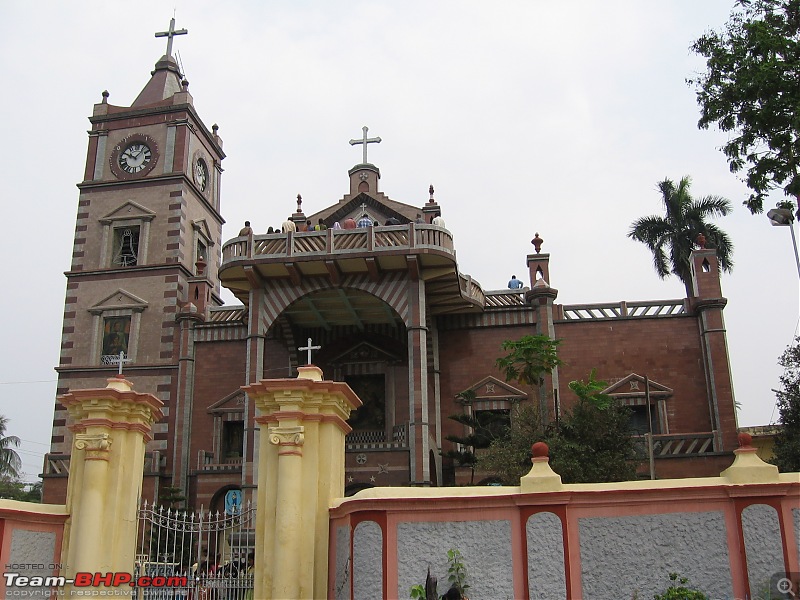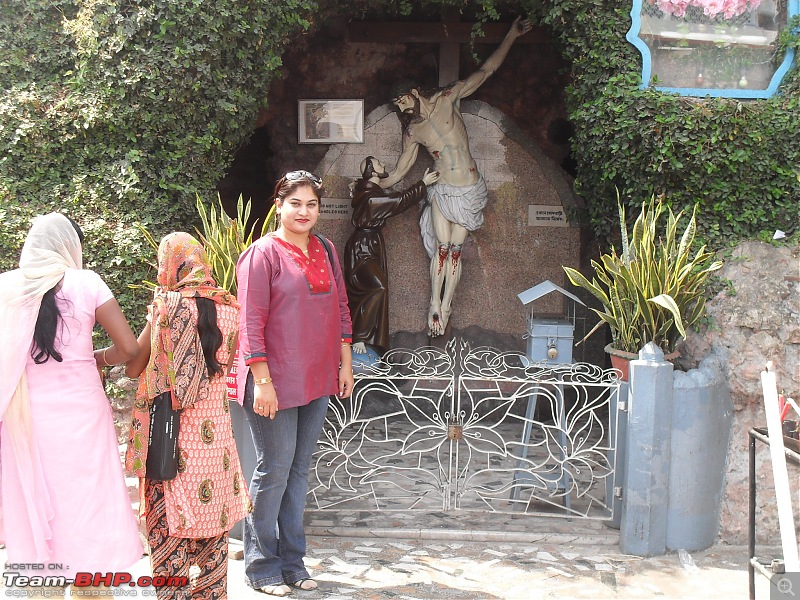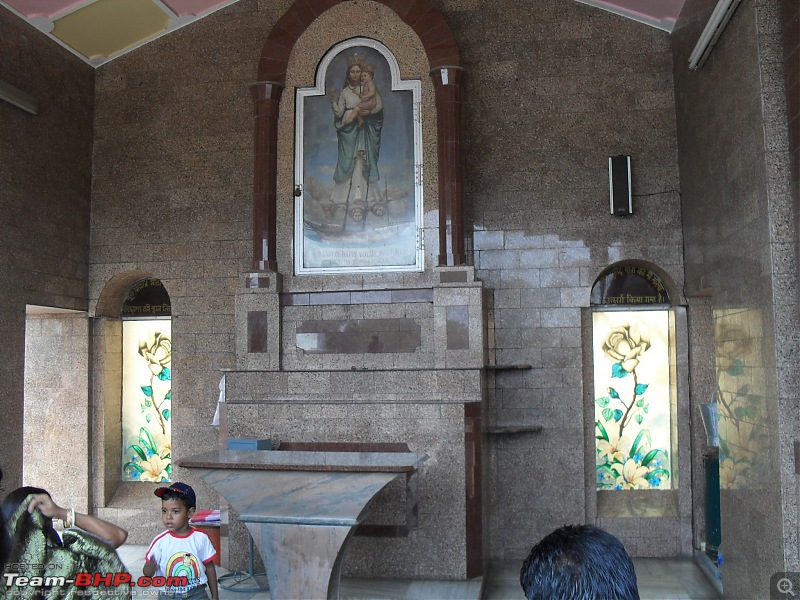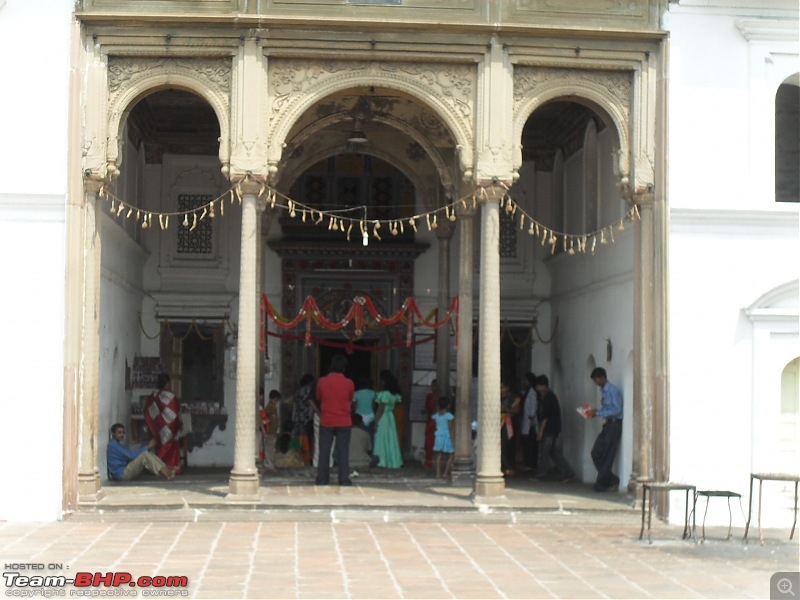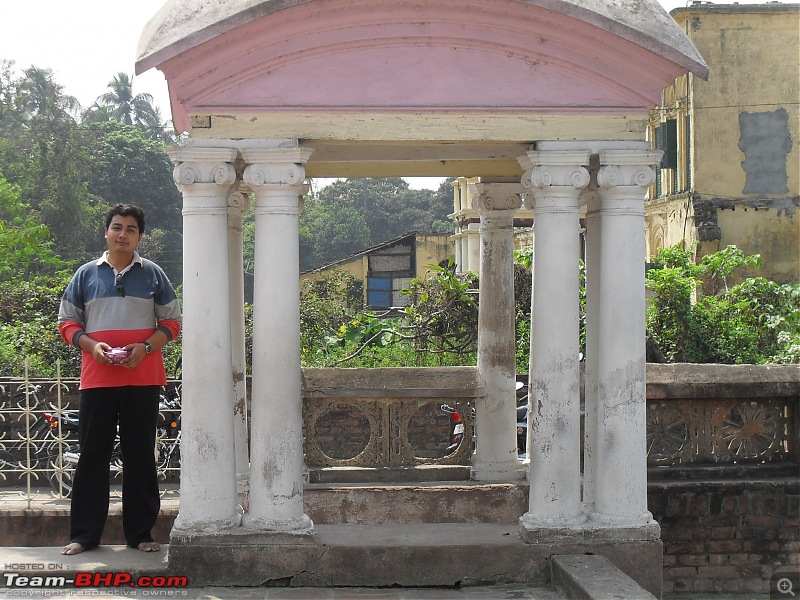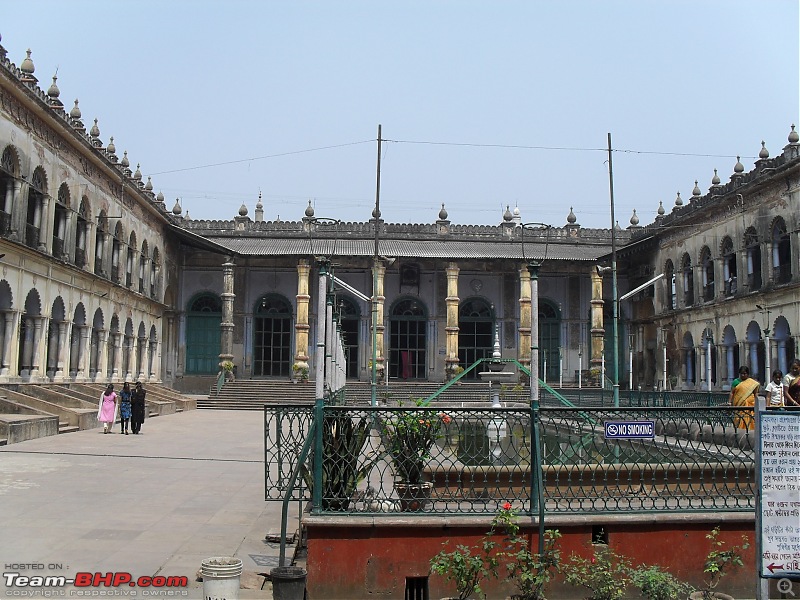Creating a new thread on a topic is a little more egregious than bumping up an old one on the same. Hence I thought to provide some more details about Bandel Church through some recent pictures, which were not published in the OP or its successors.
As the OP states it is one of the oldest churches in West Bengal. Well , in fact it is
not a church in the strict sense of the word. It is a
basilica -and so declared by Pope John Paul II on November 25, 1988.
The entrance of the Basilica is characterised by Mother Mary and her infant son Jesus, astride a small ship with a mast.
 The Entrance
The Entrance 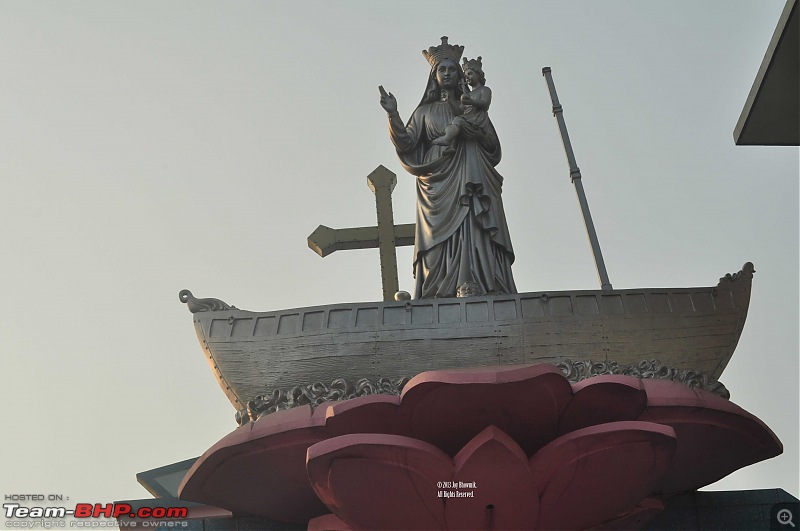 The small ship , Mother Mary and Infant Jesus
The small ship , Mother Mary and Infant Jesus 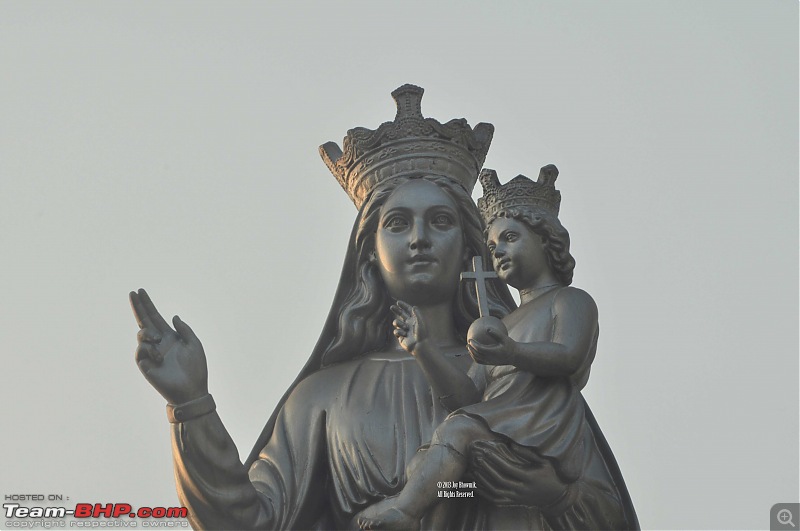 Close-up of Mother Mary
Close-up of Mother Mary 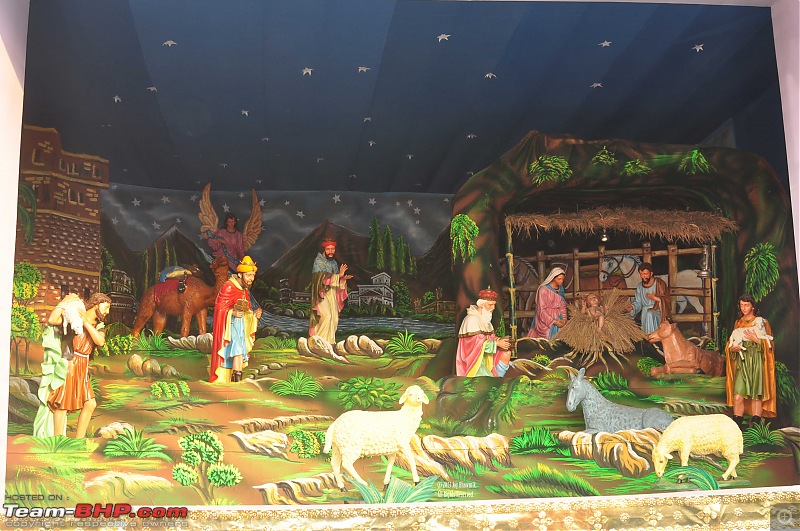 Nativity scene displayed just outside the main entrance
Nativity scene displayed just outside the main entrance during Christmas, 2013
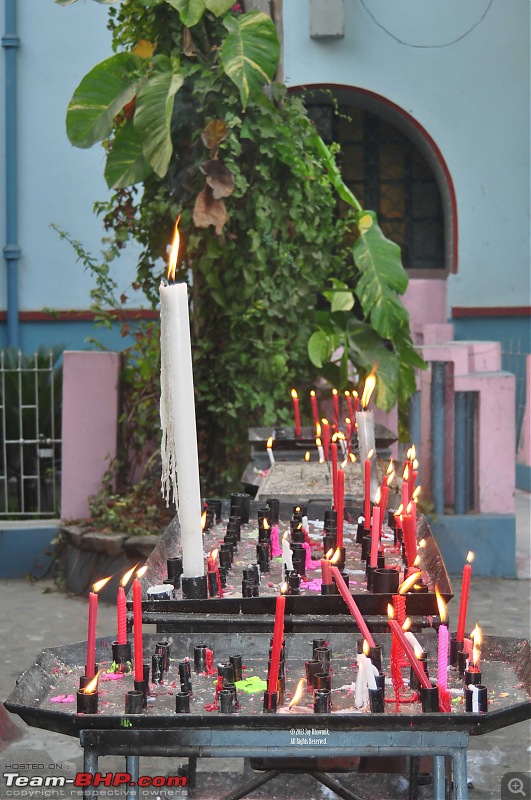 Candles lit by the devout who wished for something...
Candles lit by the devout who wished for something... 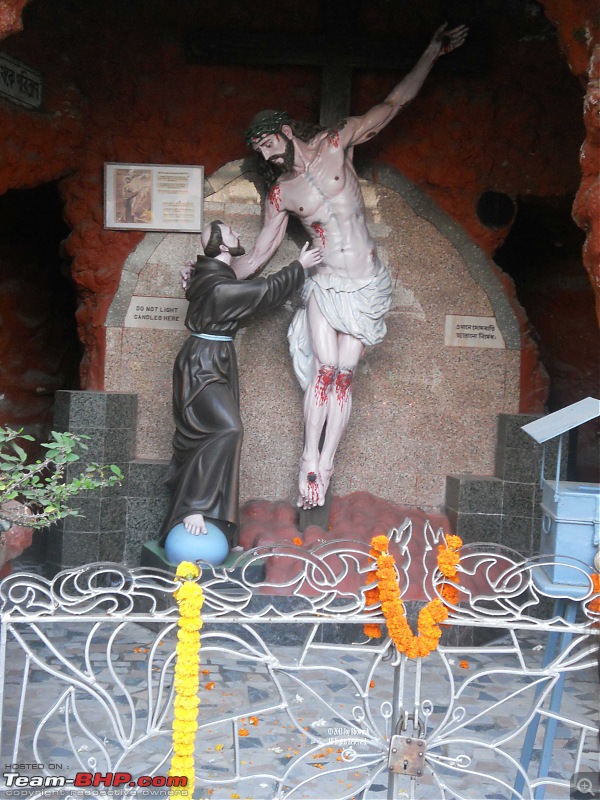 at the wishing well.
at the wishing well. 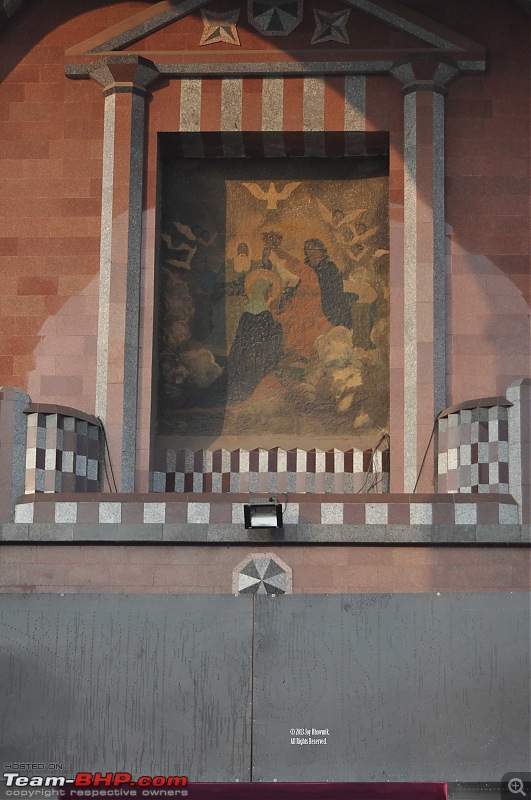
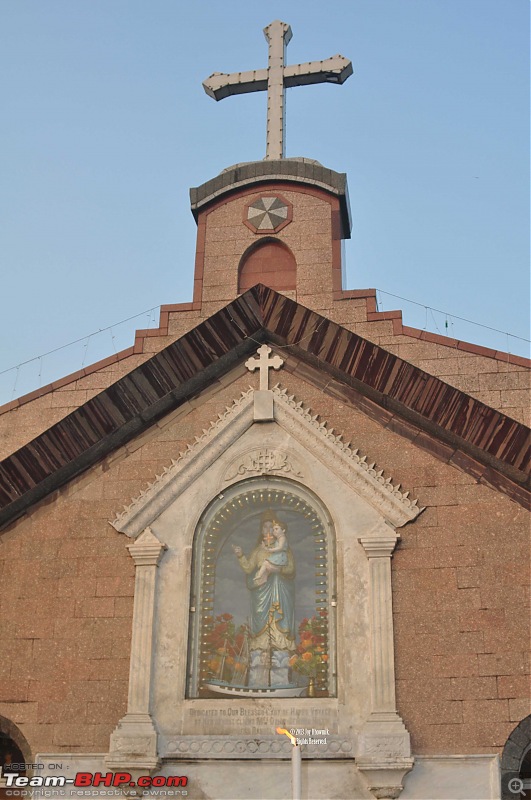 Beautiful frescoes decorate the building
Beautiful frescoes decorate the building  A History of Bandel Siege of Hooghly (1632)
A History of Bandel Siege of Hooghly (1632)
The Portuguese established a prosperous trade and military settlement at Chinsura. They called Augustinian monks from Goa, who built a monastery and a church at Bandel in 1599. This church was destroyed in the Mughal Siege of Hooghly and four of the five priests were killed. Fr. Joan da Cruz survived.
Tiago and the Statue Sink
Tiago, an ardent devotee of Mary, attempted to carry the statue of Our Lady of Happy Voyage across the Hooghly to safety. A deadly arrow from the enemy pierced him to death; he sank into the water along with the statue. It was the year 1632.
The Miracle of the Elephants
Fr. Joan da Cruz and a few thousand Christians were deported to Agra fort and condemned by emperor Shah Jahan to die at the mercy of ferocious elephants. One elephant with its trunk raised and placed Fr. Joan on its back. Slowly it carried him in front of Shah Jahan and knelt before him as if imploring for mercy. The emperor and the public, impressed by the miracle, set the prisoners free.
Reconstruction and Rehabilitation
Fr. Joan da Cruz and the Christians were sent back to Bandel. Shah Jahan gave money to reconstruct the church and endowed it with 777 bighas of land, in the year 1633.
 Our Lady Returns
Our Lady Returns
Fr. Joan da Cruz heard a call in the night from the river; he recognized the voice of his merchant friend Tiago. Over the water, illumined by a miraculous light, he announced that Our Lady was coming back. "She saved the Christians from death" he said. The Father thought it was a dream; but on the following morning a group of fishermen brought the statue to the entrance of the church telling the Father : "Guru, MA has come back".
The Mast
At the closing of the celebrations for the return of Our Lady's Statue, a Portuguese ship suddenly appeared on the Hooghly's waters near the church. After the main function, the Captain removed one of the masts of the ship and donated it in fulfillment of a vow made by himself and the crew, when in serious danger of shipwreck in the Bay of Bengal. He had it raised in front of the church where it still stands. The sails given along with the mast have not been preserved to the present day.
A history of the Parish
The Augustinian fathers and the church of Goa administered the shrine for three centuries. The Jesuit fathers had educational institutions. St. John Chrysostom School was founded in 1870, The Salesians took over in the year 1928. Later Don Bosco school and Seminary (1951), Auxillium Convent School (1952), a house for Retreats and Seminars (1968) and Mother Theresa Sisters Convent (1987) were established.
Bandel Today (1990)
In recent years, the shrine has been repaired and renewed with marble and granite. Several devotional spots have been constructed - the grotto, Fatima shrine, and minor chapels inside and outside the church. The local Christian community, which had virtually disappeared through the centuries because of poverty and disease , is growing. The shrine has been declared a Basilica on November 25th 1988 by a decree of Pope John Paul II
 (3)
Thanks
(3)
Thanks
 (3)
Thanks
(3)
Thanks
 (1)
Thanks
(1)
Thanks
 (1)
Thanks
(1)
Thanks
 (1)
Thanks
(1)
Thanks

 (1)
Thanks
(1)
Thanks




 , Sunday morning found me snoozing waayy past the promised departure time. In fact, by the time wifey & I left home, Joseph and said convoy had already left the city and on the highway! A mad, mad dash - covering about 75 kms in an hour - saw me finally catch up with Joseph, just before Bandel town. The remaining 5-10 kms were traversed through narrow village roads, before we finally hit Bandel church.
, Sunday morning found me snoozing waayy past the promised departure time. In fact, by the time wifey & I left home, Joseph and said convoy had already left the city and on the highway! A mad, mad dash - covering about 75 kms in an hour - saw me finally catch up with Joseph, just before Bandel town. The remaining 5-10 kms were traversed through narrow village roads, before we finally hit Bandel church.


